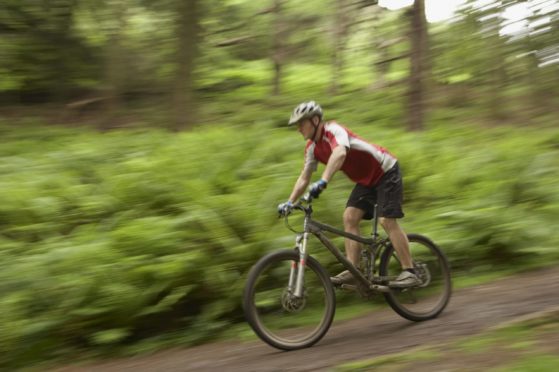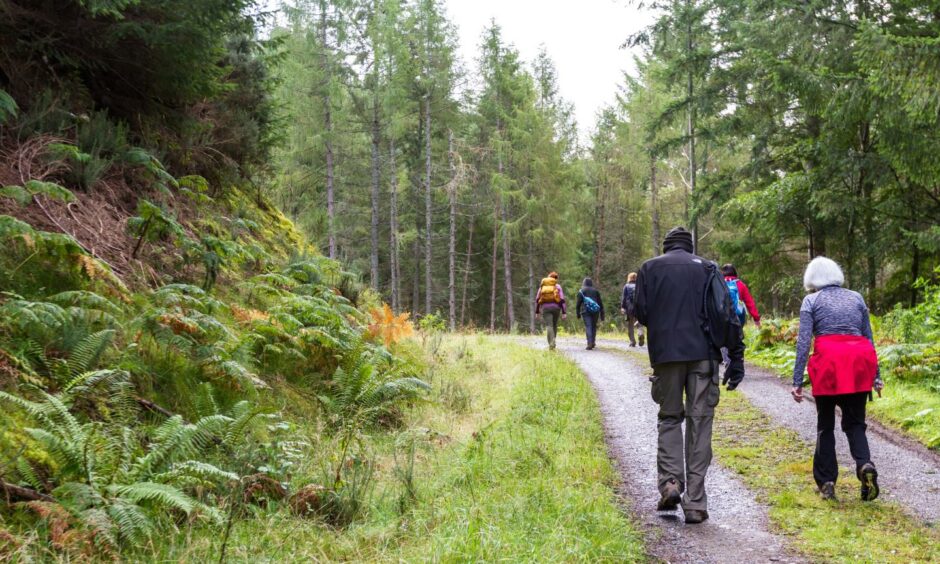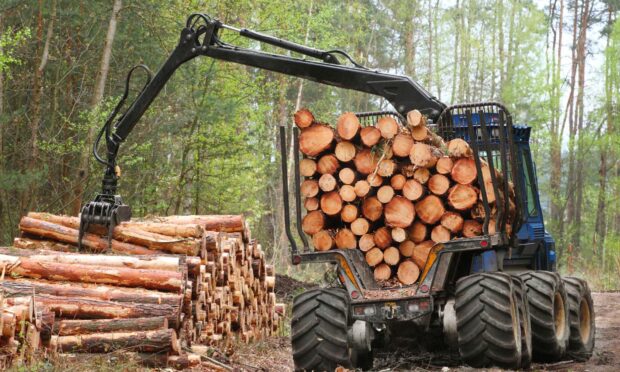As woodlands manager for Moray Estates, I’m lucky to be outside much of the time, shaping a wide range of woods and forests.
What I do is called ‘multi-purpose forestry’ – because it involves producing timber, offering opportunities for recreation and supporting wildlife and biodiversity.
Woodlands change over time.
For example, when a spruce crop planted next to a burn in the 1970s is felled to provide timber for construction or fencing, it might be replaced with a broadleaved woodland to improve the riverside habitat. Or access roads for timber harvesting can subsequently open up routes for a new generation of people to enjoy the woods.
Moray Estates’ forestry team manages woods close to centres of population – such as Balloch and Culloden on the eastern outskirts of Inverness.
These are classed as peri-urban woodlands and their recreational value is higher as they are used more than woodlands in the back of beyond.
Most of these woodlands cope well with increased public use, but high levels of pressure from a wide range of woodland users can bring their own problems.
One example is mountain bike trails.
The High Wood at Castle Stuart, near Balloch, is a large, busy recreational wood, with an estimated 40,000 annual visits – walkers, dog owners, horse riders and mountain bikers.
There are nearly 13km of core paths, and many other routes through the wood, including an estimated 15km of mountain bike trails – built by bikers and classed as ‘unauthorised trail’ as they are not designed and approved by the owner or the woodland manager (me).
Mostly, this isn’t an issue, and we try to accommodate new trails and jumps through the woods in line with National Access Forum guidelines and recommendations from Scottish Cycling, harvesting around them to avoid destroying routes.
However, sometimes we have to intervene and take down dangerous structures, while bikers appearing suddenly at speed on some trails creates conflict with dog walkers and horse riders.
Land managers are often caught in the middle.
We are not resourced to deal with inter-recreational disputes – we are simply trying to accommodate all forms of recreation compliant with the Scottish Outdoor Access Code, whilst growing timber and providing woodland habitat.
These issues are commonplace throughout Scotland where there are steep slopes. Some groups have been set up to check, maintain, alter, and improve trails and to create environmentally-friendly routes.
We are introducing one such trail group to the community council in the Balloch area to try and resolve inter-access issues.
Another issue we come across is wild camping, den building and partying.
Pandemic restrictions put pressure on peri-urban woodlands and we saw gatherings in the woods near Forres and Balloch.
This has usually led to litter being left behind – including cans, glass and plastic bottles, food packaging and camping chairs – and fire pits smouldering.
Some locals have been public-spirited enough to collect litter on their walks and this is really appreciated, but why is it acceptable to throw it down and walk away in the first place?
It takes guts to stand up to your mates and persuade them to take away their rubbish after the party in the woods, but that’s what is needed.
It is great to see kids playing in the woods and dens are certainly something most of us can remember building.
One such structure getting built amongst spruce trees was pretty impressive – except for the 30 or so 4” nails bashed into the standing trees to hold the roof structure up.
I had to take this down and remove all the nails I could so future spruce sawlogs don’t enter the sawmill and get rejected for being full of metal. Using rope to lash around the trees would have been a less damaging method of constructing a temporary den or shelter.
Lastly, harvesting trees in peri-urban woodlands can be challenging.
Tree thinning takes place in a five-year cycle once trees have reached ‘pole stage’, which is around 15-25-years-old depending on species.
Thinning allows the best trees to grow better, delivers more regular income and improves biodiversity by allowing light onto the forest floor.
Well-thinned woods are lovely to walk through, but harvesting sites are potentially dangerous places and keeping recreational users safe whilst earning a living in the woods is again a balance of rights and responsibilities under the Scottish Outdoor Access Code.
People can easily become ‘sign blind’ and walk past them on a work site if they are not relevant and not in the right place.
It is the harvesting team’s responsibility to put up warning signs when the site is active and potentially dangerous to protect recreational users.
It is key for them to take down warning signs and barriers once the site is safe again. It is also very important in busy woodlands to have alternative routes and diversions.
In summary, peri-urban woods are a valuable resource for all ages and for different uses. Mostly, mixed use works well.
Occasionally issues arise, but as a woodland manager, I’m committed to talking to all interested parties to find solutions.
● Ben Clinch is woodlands manager for Moray Estates.



